VVAM Newsletter 94 – 2004
New deputy-director and chairman
On 15 June 2004 Mr Frans Smolders assumed the position of deputy-director / curator of the Airborne Museum Foundation. Part of his job will be to pro¬duce a policy plan for the future of the museum which, when complete, will be presented to the council. His other activities will include fundraising, the presentation of the collection and the organisa¬tion within the museum. A redistribution of the per¬manent staffs tasks will also be implemented. Until recently Frans Smolders was art historian and cura¬tor at the Apeldoorn Museum and is widely experi¬enced due to his work in other museums.
Mr A.P de Vries from Ellecom has been appointed chairman of the board of the Airborne Museum Foundation. Mr De Vries has occupied many differ¬ent posts in the police force, the most recent being Deputy Chief Constable for the Gelderland-Midden region. He succeeds Mr J.W. van Slooten in this func¬tion. Mr Van Slooten became temporary chairman following the departure of Mr J.W. Verlinden, and will continue as a member of the board.
Human remains, Veerweg
In the December 2003 issue of the Newsletter we reported the finding of the remains of an allied sol¬dier in the garden of a house in Veerweg, Oosterbeek.
In April last year a team from the ‘Bergings en Identificatie Dienst van de Koninklijke Landmacht’ (BID – Recovery and Identification Service of the Royal Dutch Army) arrived in south-west Veluwe- zoom, and Warrant Officer Fred Bolle and Sergeant- Major Geert Jonker recovered the almost complete skeleton of a British serviceman. The investigation then carried out by the BID quickly led to a positive identification. The report was sent to the relevant authorities in the United Kingdom, since when everything has gone quiet.
In the meantime the BID has released the identity of the soldier concerned. The remains are those of Private Arthur Foster of 11 Platoon, B Company, 1st (Airborne) Battalion The Border Regi-ment. Private Foster was killed on 21 September 1944 at the age of 27. We may assume that he died close to where his field grave was found. A four centimetre hole in his skull leads one to suppose that his death was caused by shrapnel.
About this time last year there was good reason to believe that this soldier would be laid to rest among his comrades in the Arnhem (Oosterbeek) War Cemetery in September 2003. Sadly, this was not the case. As usual, the wheels of the British govern¬ment turn exasperatingly slowly.
Now it is not even certain that Arthur Foster’s re¬interment will take place during the forthcoming period of commemoration! It would appear that attempts to trace relatives have so far been unsuc¬cessful, not surprising when you realise that a western country such as the United Kingdom, in 2004, does not have a population register!

Private Arthur Foster, B Company, Border Regiment, who was killed in the garden of a house in Veerweg, Oosterbeek, on 21 September 1944. His remains were discovered in the spring of 2003 during excavation work.
So, it is an extremely sad and very regrettable state of affairs that Private Foster’s remains are still in the keeping of the BID in Bussum instead of in their rightful last resting place, the Airborne Cemetery in Oosterbeek.
(Geert Maassen)
News from Niall
1 bought my first book about the Battle of Arnhem in 1975, when I was still at school. It was ‘Remember Arnhem’ by John Fairley. Since then I have collected a large number of publications about Operation Market Garden and the British airborne forces. Some of these books maintain that all Royal Army Medical Corps (RAMC) personnel belonged to the group known as ‘conscientious objectors’ and never bore arms. This claim has always irritated me because it is incorrect, as one of the well-known ‘Arnhem photos’ proves. The one I refer to is Imperial War Museum photograph number BU 1105, showing Corporal Midge Mills, RAMC, kneeling beside the field grave of Trooper Edmond of the 1st Airborne Reconnaissance Squadron, behind Duitse- kampweg 9 in Wolfheze. This photo clearly shows that Cpl. Mills is carrying a revolver or pistol in a holster attached to his belt. Over the years I have spoken to many RAMC veterans and, with a few exceptions, no-one can recall any of their comrades having been a conscientious objector.
I know of just one, a certain Private E. Hewitt, RAMC, who was killed in the fighting in North Africa. He was a conscientious objector and was attached to the 1st Parachute Battalion as a med¬ical orderly.
I was therefore surprised when, earlier this year, I received a letter from the son of an ex-member of 181 Airlanding Field Ambulance. He had recently been given a copy of my book ‘Red Berets and Red Crosses’. His father, Private Cecil Charles Hull, RAMC, had, at the age of 28, taken part in the airborne operation at Arnhem. Enclosed with the letter was an article from the ‘Wood Green Observer’ dated 14 October 1944, about five men from Wood Green who had been at Arnhem. In it Private Hull was explicitly referred to as a con-scientious objector.
According to my information this is the only clear evidence that a conscientious objector was involved in the Battle of Arnhem. I would like to hear from anyone who has more information about conscientious objectors at Arnhem.
A friend of mine has told me that the army number of all conscientious objectors began with ’95’. This indicated that they belonged to the NCC, the Non Combatant Corps. However, Private Hull’s army number was 7687687, a ‘normal’ RAMC number.This could mean that my friend’s theory is not right.
Once again, if anyone has more information on this subject I would be very pleased to hear from them. My address is: 3 Church Road, Warton, Lancs, PR4 1BD, United Kingdom,
e-mail: niall.cherry@baesystems.com
(Niall Cherry)
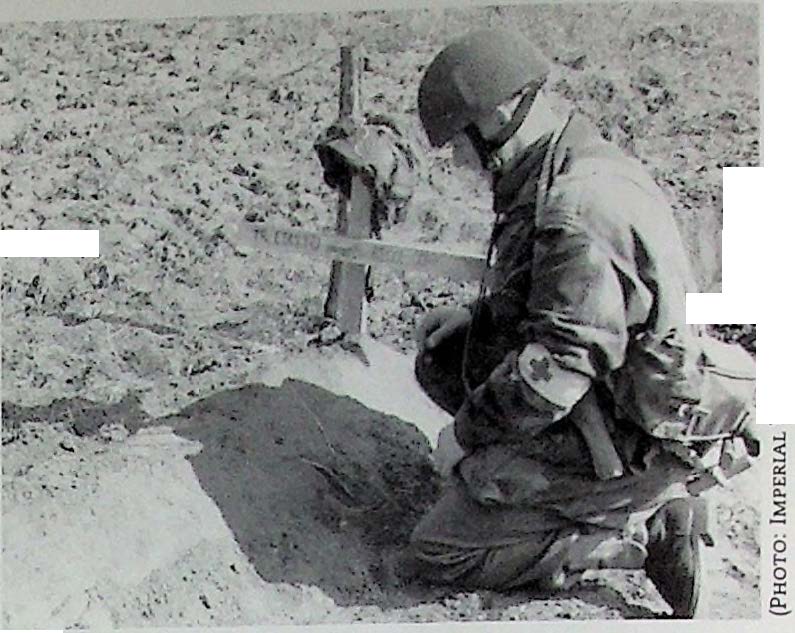
18 September 1944, Wolfheze. Corporal Mills, RAMC, kneels beside the field grave of Trooper Edmond. It is obvious that Mills is carrying a pistol or revolver in a hol ster attached to his belt.
Ede in Wapenrok (Ede in Uniform)
The above-titled book was published on 27 May 2004. It is about two centuries of military history in the municipality of Ede, and was written by Society member Evert van de Weerd from Ede in conjunc¬tion with the Barneveld archivist Gerjan Crebolder. Both gentlemen already have a string of military history books to their name.
The subject of this new study is the Ede garrison, but covers the wide surroundings as well. This area is an important military centre of old, with much happening here during the Second World War. In the section on ‘Bezetting en Bevrijding’ (Occupation and Liberation), those interested in the 1940-1945 period will find a treasure trove of information, stretching from the building of the German airbase at Deelen and the De Harskamp airfield, to a de¬tailed description of the liberation operations in this part of the Veluwe in April 1945.
Chapter 6 focuses on the Battle of Arnhem, as far as that which occurred within the boundaries of Ede municipality is concerned. The authors provide a systematic and detailed description of the events which took place on the ground and in the air. This brings to light different aspects that have never previously received attention, or hardly ever. Here are a few examples from the numerous subjects. For instance, the fact that Ede was bombed three times, not two, on Sunday morning 17 September 1944 is examined, and the organisations and actions of the German ‘Westgruppe’ at Ginkel are analysed. The stories of all six Dakotas, carrying men of the 4th Parachute Brigade, which crashed on 18 September 1944 are detailed, as is the fate of the approximatelyl30 men who were dropped far from Ginkel on the same day.
The role of the Ede Resistance and Operations Pegasus I and II are also dealt with.
The book is beautifully produced and contains no less than 492 pages plus some 450 photos, maps and diagrams. Sponsorship has allowed the price to be kept to just € 19,50. ‘Ede in Wapenrok’, ISBN
90-701506-3-8, was published by the Koninklijke BDU Uitgeverij in Barneveld, and is available at the Airborne Museum ‘Hartenstein’.
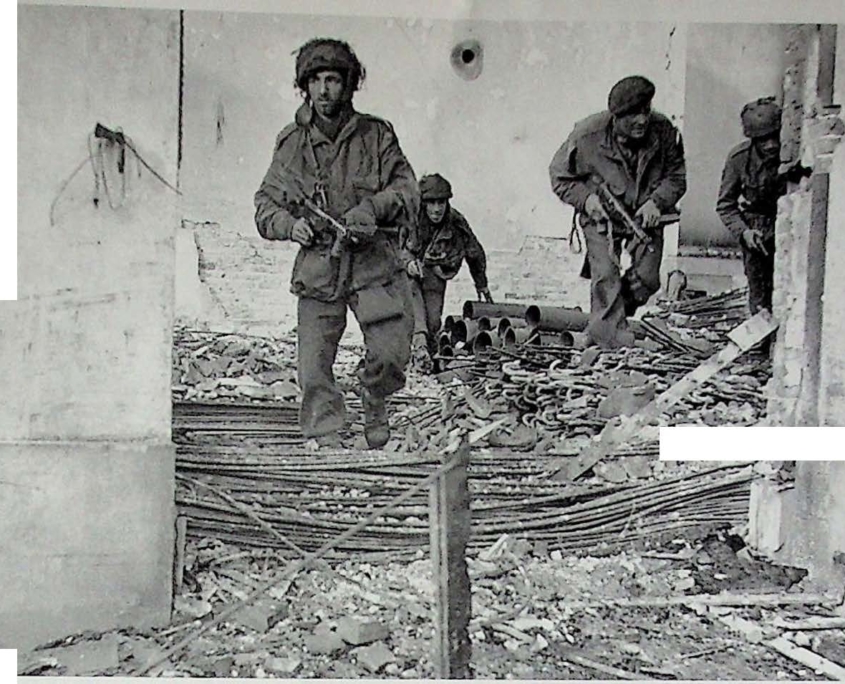
September 1944, a British patrol somewhere in Oosterbeek. Where exactly was this photo taken?
Trenches restored
On Saturday 1 May last a group of volunteers cleared out a number of trenches on the Papendal Sports Centre complex, just north of the Utrecht- Arnhem railway line. It was here that Brigadier Hackett established the HQ of the 4th Parachute Brigade at about 11 am on 19 September 1944. After the British advance across Johannahoeve had been halted at Dreyenseweg, and the Polish Parachute Brigade’s artillery had arrived by glider, it was de¬cided to withdraw all troops westward, and then to head south via the level crossing at Wolfheze and the tunnel under the railway embankment to a point east of Bilderberg. A number of men crossed the railway line by climbing the embankment.
4 Brigade HQ left the above-mentioned trenches in the late afternoon of 19 September 1944.
The digging out of the trenches to their original depth was arranged by Philip Reinders in consult¬ation with Willem Wichhart and Frieda van Geest from the Papendal Sports Centre. The holes have been fenced off to prevent people or animals falling in by accident.
Where was this photograph taken?
It is probably one of the most-published photos to come out of the Battle of Arnhem. It shows a four- man British patrol moving through the ruins of a building somewhere in Oosterbeek. Sergeant Mike Lewis, one of the three cameramen from the Army Film and Photographic Unit (AFPU), took the picture between 23 and 25 September 1944. From the ‘Dope Sheet’ used by Sgt. Lewis to record his filming, it appears that this is photograph 8 of film 4. He took the other seven exposures on this roll at the Hartenstein Hotel, so it is reasonable to assume that photo 8 was shot in the same area. The ques¬tion is, where exactly?
The scene is almost certainly not an action photo, but posed, because the patrol is approaching the photographer. On the ground is a large amount of concrete reinforcement and a heap of steel pipes. The area through which the men are passing prob¬ably has no roof (anymore) because it seems to be in full daylight.
As far as we are aware, nobody during the inter¬vening 59 years has been able to come up with an answer to the question: ‘Where was this photo taken?’ Therefore, we are appealing to our mem¬bers to help solve the riddle.
‘Oosterbeekers’ in particular who were living in the village in 1944 might recall where in the vicinity of the Hartenstein such building materials might have been stored. The editors await your response(s) with bated breath!
‘De Plek, Oosterbeek. September 1944’ (The Spot, Oosterbeek, September 1944)
The recently-published booklet ‘De Plek, Ooster¬beek, September 1944’ is the first in a series in which writers take a close look at prominent loca¬tions. In this first part journalist Frans van Deijl tells about a spot which played a role in the Battle of Arnhem. On reading it we wonder what the author had in mind when writing this booklet. Did he intend describing a fictitious place? If so, in view of the historical aberrations, he appears to have allowed his fantasy to run riot. Actually, he is writ¬ing about an existing location, but does not allow any reference to history to hamper him. In September 1944, a lad from Oosterbeek, Frans, experiences the airborne landings and the subse¬quent fighting. At first it is one big adventure, until a wounded British soldier is given shelter in the cel¬lar of his parents’ house. Suddenly the war is wor¬ryingly close, even more so when, later, a wounded German is brought in. Eventually the Englishman is rescued, and years later Frans sees the man at a commemoration.
The story lacks a little depth perhaps but it is simp¬ly written and is certainly suitable for children of group 8 level. One of the few modem children’s books about the Battle of Arnhem, it will undoubt¬edly appeal to the younger reader.
‘Oorlog in Oosterbeek’, by Jan van Reenen, released in 2003 by publishers Den Hertog BV, Houten. ISBN 90 331 1736 3, 94 pages, illustrated.
(W. Boersma)
Appeal
Member Hans Molier from Roosendaal has asked us to include the following appeal in the Newsletter: ‘On 16 May 2004, the STIWOT (Stichting Informatie WereldOorlog Tivee – Foundation for Information about World War II), a voluntary organisation which sets up and maintains internet websites (mainly in Dutch) providing information about the Second World War, launched a new website – www.ww2awards.com. This Dutch and English lan¬guage site is packed with information about decora¬tions awarded during WW II, and their recipients.
A team has already spent more than a year devel¬oping the site and an enormous amount of material on the subject has been compiled. Nevertheless, we are still looking for additional details, hence this appeal to you. Should you have any photographs or information to do with decoration awards which you would be prepared to place at our disposal, we would be delighted to hear from you. It could be that even a family member of yours received a dec¬oration during the Second World War. If so we would love to hear your story and, of course, photos and additional facts would be most welcome. You can e-mail the details to us via the website. If you do not have an internet connection you can contact Hans Molier, Susannadonk 123, 4707 WT Roosen-daal, telephone 00 31 65 554531.’
COLOPHON
The Newsletter is a publication of the Society of Friends of the Airborne Museum Oosterbeek (SFAM) and appears four times per year. The objective is to promote the Airborne Museum, the SFAM and the history of the Battle of Arnhem.
Editors: drs. R.P.G.A. Voskuil and G.H. Maassen jr. Editorship address: Jan van Riebeeckweg 39, 6861 BD Oosterbeek; e-mail: wam@planet.nl Coordination sending, archiving and distribution of back numbers: Chris van Roekel, Oosterbeek.
English translation: Cathrien and Peter Clark. Design: Hildebrand DTP, Wageningen.
Print: Drukkerij Verweij Wageningen BV.
SFAM representative in the U.K.: Niall Cherry, 3 Church Road, Warton, Lancs PR4 1BD, tel. 01772 632764; e-mail: niall.cherry@baesystems.com Airborne Museum ‘Hartenstein’ address: Utrechtseweg 232, 6862 AZ Oosterbeek, telephone 00 31 26 3337710;
e-mail: info@airbornemuseum.com
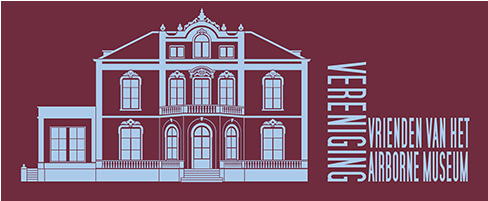
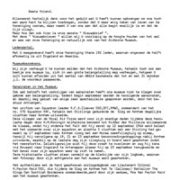
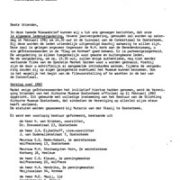
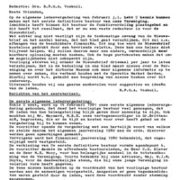
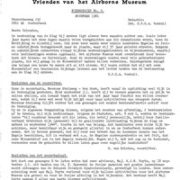
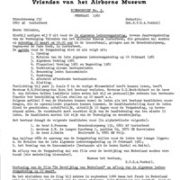
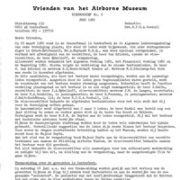
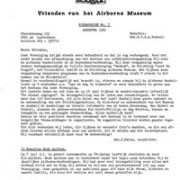
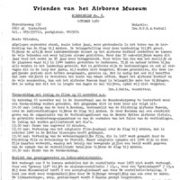
Plaats een Reactie
Vraag of reactie?Laat hier uw reactie achter.